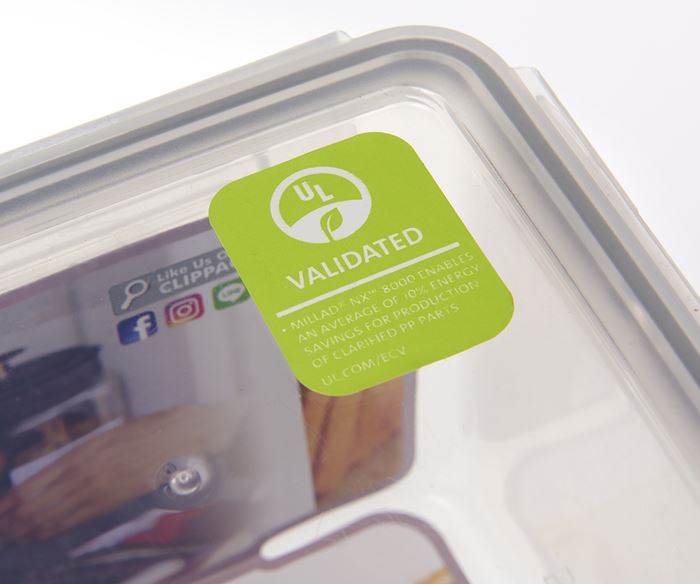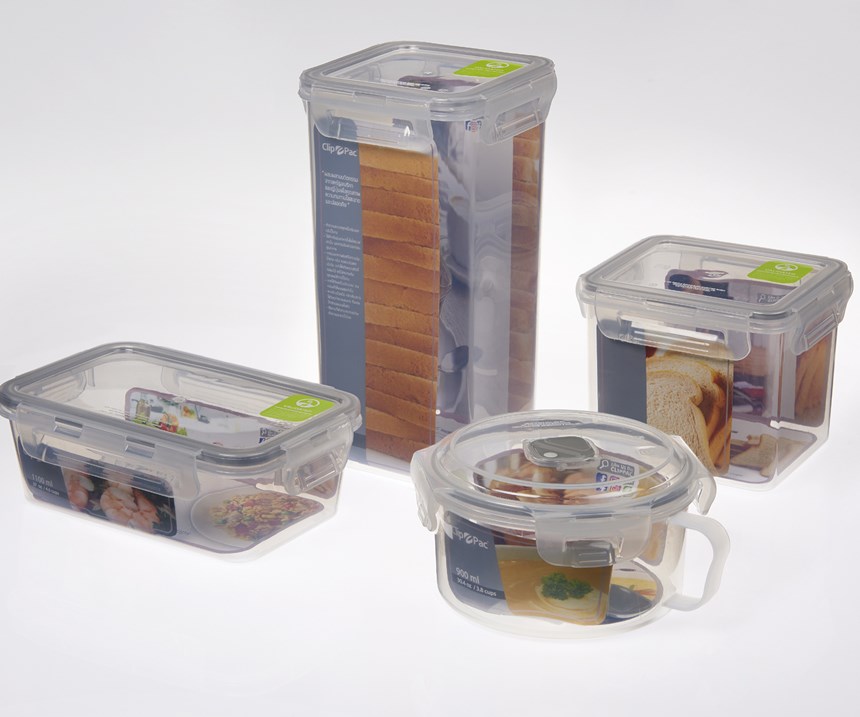You Might Get an Eco Label Just from Using Clarified PP
Asian housewares makers first to embrace use of UL eco-label for PP products containing Milliken’s Millad NX 8000 clarifier.
I first reported on Millad NX 8000—a PP clarifier derived from a then ‘new’ class of molecules based on nonitol, developed by Milliken Chemical, Spartanburg, S.C., 11 years ago. Since then, there was more reporting in terms of this clarifier’s performance in an ever-growing number of consumer applications and well-documented energy-saving benefits. Downstream customers, particularly in Asia, have now begun to leverage the latter to their manufacturing advantage and the resulting UL Environmental Claim Validation (ECV) label to their marketing advantage.
Milliken has collaborated with the China Plastic Housewares Association to help broaden awareness of the energy consumption reductions that can be achieved by using Millad NX 8000 in a transparent PP product. The independent organization UL Environment, a business unit of UL (Underwriters Laboratories), has documented that use of Millad NX 8000 clarifier can result in energy savings of between 8-12% in injection molded, transparent PP products.
“The association is dedicated to helping the entire plastic housewares industry in China become more efficient and eco-friendlier, and thus the UL label means a lot in terms of demonstrating a commitment to energy saving,” said Milliken’s China business leader Kurt Xu, China. Even though this effort is its early stages, five of the association’s leading member companies have agreed to get the UL label authorization for those plastic parts they produce using Millad NX 8000 as clarifier
Added Milliken’s Asia marketing leader Vincent Wang, “So far, a dozen or so upstream makers of clarified PP resin have adopted the UL label, and a few leading houseware brands in China, Taiwan and Thailand—including Picnic Plast Industrial Co. Ltd. in Thailand and Citylong Group in China—have been authorized to use it. We are seeing more and more international brands showing interests, as well.”
Milliken first earned UL validation for the energy-saving benefits of Millad NX 8000 in 2013. Downstream molders and brand owners now clearly are beginning to embrace the value of the concept.
Millad NX 8000 has been proven to deliver positive environmental- and performance-related benefits to PP. Its step-change to the performance and haze of PP supports the development of high-clarity, high-quality plastic houseware products. Importantly, use of the additive also allows conversion temperatures to be lowered in injection molding. This reduces processors’ energy use and any accompanying CO₂ emissions. Numerous industrial trials indicate that use of Millad NX 8000 can lower required processing temperatures from 235°C to 190°C (455° F to 374° F), resulting in the above-noted energy savings of between 8 and 12%, while also lowering associated CO₂ emissions.
Upon first receiving the certification, Milliken had noted that the UL Environmental Claim Validation provides the assurance of independent confirmation of environmental credentials by a third party in markets deluged by unsubstantiated eco-claims. Milliken stresses it is committed to developing innovations that support more sustainable processing and a reduction in environmental impact for the plastics industry. Having UL Environment verify the positive energy savings of Millad NX 8000 was a major step in that direction.
Related Content
-
Improving Twin-Screw Compounding of Reinforced Polyolefins
Compounders face a number of processing challenges when incorporating a high loading of low-bulk-density mineral filler into polyolefins. Here are some possible solutions.
-
Flexible-Film Processor Optimizes All-PE Food Packaging
Tobe Packaging’s breakthrough was to create its Ecolefin PE multilayer film that could be applied with a specialized barrier coating.
-
The Fundamentals of Polyethylene – Part 1: The Basics
You would think we’d know all there is to know about a material that was commercialized 80 years ago. Not so for polyethylene. Let’s start by brushing up on the basics.














